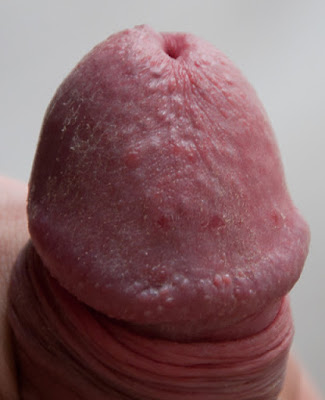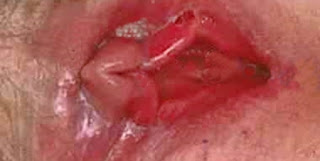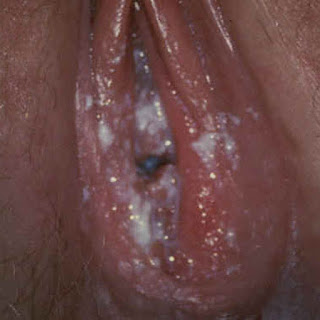Yeast infections can appear almost anywhere on the skin, but they are often most difficult for those who experience this issue somewhere on the face.
Yeast skin infections on the face can occur in many different ways, but there are also a number of methods through which these conditions may be prevented and treated.
How to Treatments Your Yeast Infections On Face!
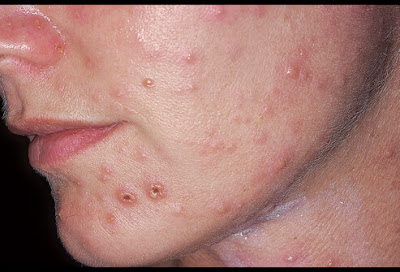 |
| Yeast infection on face picture |
Women face many different possible infections that can attack their reproductive systems and out of those the more common is yeast infections. It is estimated that at least three quarters of women face getting a yeast infection at some time in their life. It is caused when the naturally occurring fungus is able to over grow and leads to annoying and embarrassing symptoms like burning, itching, a discharge like that of cottage cheese, sometimes with an unpleasant odor, and irritation around the vagina. If such symptoms present themselves it is a good idea to talk to your doctor to get a prescription to treat the infection, or to discuss treatment options.
Yeast infection on baby face
Thrush is a yeast infection that causes white patches in the mouth and on the tongue. Thrush is most common in babies and older adults, but it can occur at any age.
 |
| Yeast infection on baby face |
In babies, it is easy to mistake thrush for milk or formula. It looks like cottage cheese or milk curds. Don't try to wipe away these patches, because you can make them red and sore. Some babies with thrush can be cranky and do not want to eat.
Baby can get yeast on the skin--this can appear anywhere on the body. Call doc's office and talk with the nurse. He/she will advise on what to do. Antibiotics are usually the culprit more than the cure when it comes to yeast. In the mean time try to keep her face as dry as possible.
Yeast infection on face pictures
 |
| Facial Yeast infection |
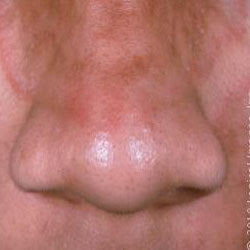 |
| Nasal Yeast infection |
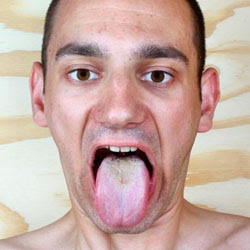 |
| Oral Yeast infection |
 |
| Scalp Yeast infection |
Can you get a yeast infection on your face
A
yeast infection on the face may not respond to topical treatments to completely clear up the rash. A prescription antifungal medication such as fluconazole is available by mouth to treat the condition. Commonly, the medication only requires one dose to treat the infection, according to the National Center for Biotechnology Information. Eating foods with live cultures, such as yogurt, helps restore the balance of yeast on the body.
Yeast infection face treatment
The most common yeast rash remedy recommended by a health care provider is an antifungal cream. Three types include nystatin, clotrimazole and miconazole. These are available over the counter but should be used under the advice of a health care provider when used to treat a baby. Not all antifungal creams are safe for treating a yeast rash on all parts of the body, such as the face.
To
treat a yeast infection on the face, an individual needs to keep the area clean and dry. A yeast rash does not require a bandage and placing one on the rash may increase the symptoms by trapping moisture and encouraging the yeast to spread. Obese individuals have a greater risk for developing a yeast rash. Eating a properly balanced diet can help restore the natural balance of yeast in the body. Individuals with diabetes are also at an increased risk of developing yeast in the mouth and on the face because the yeast feeds off excessive sugar secreted in the saliva. Controlling blood sugar levels may help stop yeast growth.
Yeast infection on face home remedies
Use Plain Yogurt for Yeast infection on face treatment
For
treating a yeast infection, you can use plain, unsweetened yogurt with live, active cultures. The probiotics present in plain yogurt can keep the growth of fungi in check by producing lactic acid.
- Soak cotton in plain yogurt and apply it on the infected area. Leave it on for 30 minutes, and then rinse it off with warm water and pat dry. Follow this remedy two times a day until the infection clears.
- In case of vaginal infection, dip a tampon in yogurt and insert it in the vagina for two hours. Do this twice a day.
- Also, make plain yogurt a part of your daily diet. Eat two to three cups of plain yogurt daily until the infection is gone completely.










